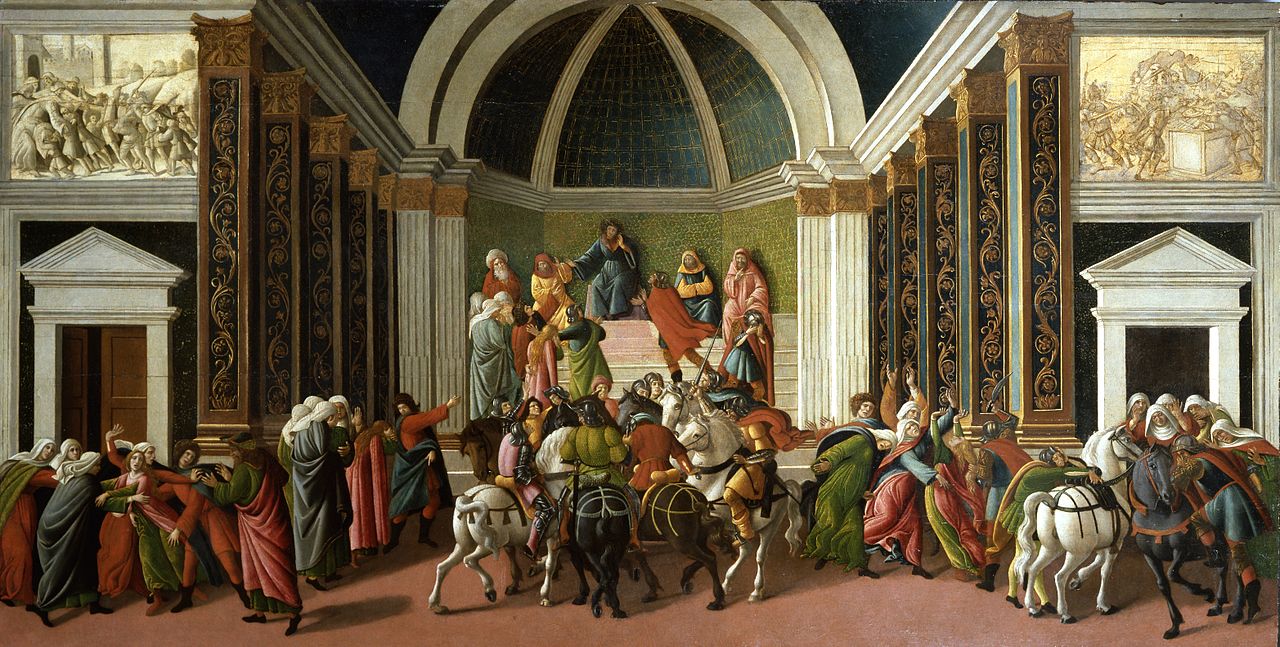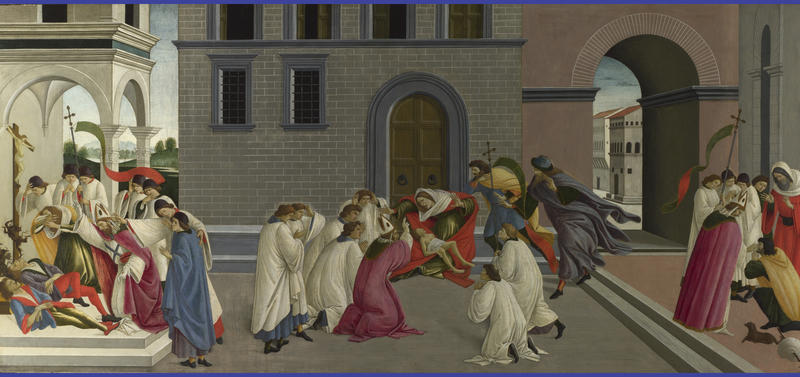Isabella Stewart Gardner Museum, Boston
14 February – 19 May 2019
Botticelli: Heroines and Heroes explores the work of the legendary Renaissance painter Sandro Botticelli, focusing on a genre called spalliera that Botticelli employed with staggering originality. The catalogue and exhibition, held at the Gardner Museum, Boston, include significant loans from European and American public collections.
At the center of this exhibition is a spalliera reunited, the
![The Death of Lucretia]()
Gardner’s Tragedy of Lucretia
![VirginiaBotticelli.jpg]()
and its companion The Tragedy of Virginia (Accademia Carrara, Bergamo).
Together with extraordinary loans of the same genre from European and American public collections, Heroines and Heroes explores Botticelli’s revolutionary approach to antiquity – from ancient Roman to early Christian – and offers a new perspective on his late career masterpieces.
![]()
Sandro Botticelli (Italian, 1444 or 1445-1510), Three Miracles of Zenobius,
Isabella Stewart Gardner Museum
Catalogue
![Botticelli: Heroines and Heroes]()
Accompanying the exhibition at the Isabella Stewart Gardner Museum, Boston (14 February – 19 May 2019), Botticelli: Heroines and Heroes explores the work of legendary Renaissance painter Sandro Botticelli (about 1444–1510).
Today the alluring and enigmatic Primavera forms the cornerstone of his modern fame, but its familiarity belies distant origins in the heady intellectual environment of Laurentian Florence and the residences of its moneyed elite. Part of a genre called spalliera, so named for their installation around shoulder (spalla) height, this type of painting introduced beautiful, strange, and disturbing images into lavish Florentine homes. With staggering originality, Botticelli reinvented ancient subjects for the domestic interior, paneling patrician bedrooms with moralizing tales and offering erudite instruction to their influential inhabitants.
Catalogue essays address Botticelli’s spalliera (Nathaniel Silver), their violence (Scott Nethersole), his textual sources (Elsa Filosa), and rediscovery in Gilded Age Boston (Patricia Lee Rubin). Entries include new insights for each work and up-to-date bibliographies, while a special section features archival materials devoted to Gardner’s pioneering acquisition of the first Botticelli in America.
14 February – 19 May 2019
Botticelli: Heroines and Heroes explores the work of the legendary Renaissance painter Sandro Botticelli, focusing on a genre called spalliera that Botticelli employed with staggering originality. The catalogue and exhibition, held at the Gardner Museum, Boston, include significant loans from European and American public collections.
At the center of this exhibition is a spalliera reunited, the
/https://public-media.si-cdn.com/filer/oldmastersnewworld_631.jpg)
Gardner’s Tragedy of Lucretia

and its companion The Tragedy of Virginia (Accademia Carrara, Bergamo).
Together with extraordinary loans of the same genre from European and American public collections, Heroines and Heroes explores Botticelli’s revolutionary approach to antiquity – from ancient Roman to early Christian – and offers a new perspective on his late career masterpieces.

Sandro Botticelli (Italian, 1444 or 1445-1510), Three Miracles of Zenobius,
Isabella Stewart Gardner Museum
Catalogue

Accompanying the exhibition at the Isabella Stewart Gardner Museum, Boston (14 February – 19 May 2019), Botticelli: Heroines and Heroes explores the work of legendary Renaissance painter Sandro Botticelli (about 1444–1510).
Today the alluring and enigmatic Primavera forms the cornerstone of his modern fame, but its familiarity belies distant origins in the heady intellectual environment of Laurentian Florence and the residences of its moneyed elite. Part of a genre called spalliera, so named for their installation around shoulder (spalla) height, this type of painting introduced beautiful, strange, and disturbing images into lavish Florentine homes. With staggering originality, Botticelli reinvented ancient subjects for the domestic interior, paneling patrician bedrooms with moralizing tales and offering erudite instruction to their influential inhabitants.
Catalogue essays address Botticelli’s spalliera (Nathaniel Silver), their violence (Scott Nethersole), his textual sources (Elsa Filosa), and rediscovery in Gilded Age Boston (Patricia Lee Rubin). Entries include new insights for each work and up-to-date bibliographies, while a special section features archival materials devoted to Gardner’s pioneering acquisition of the first Botticelli in America.